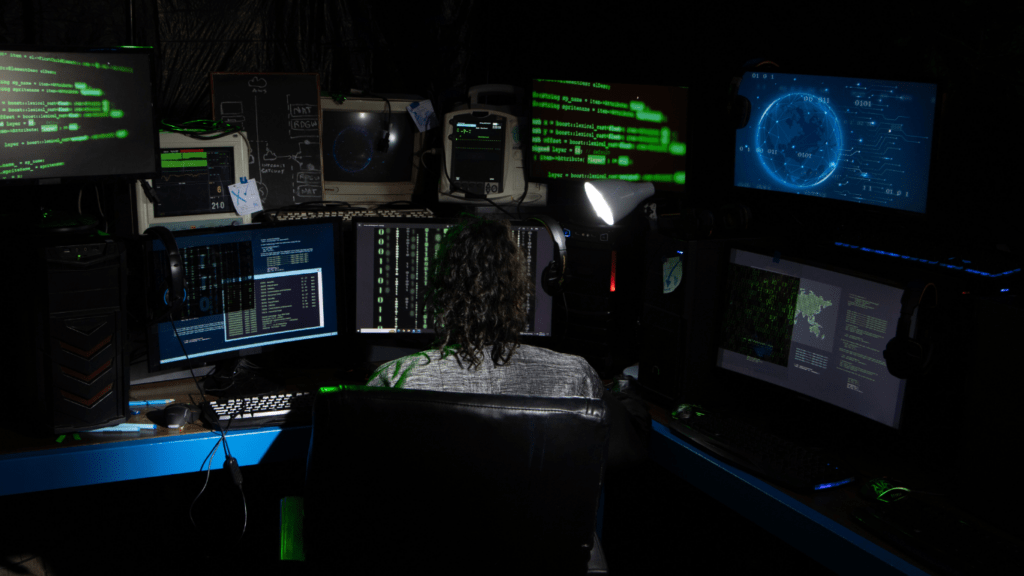Balancing Innovation and Tradition: Insights from Veteran Developers
Balancing innovation and tradition can challenge even the most seasoned professionals.
Veteran developers often demonstrate that innovation doesn’t mean abandoning tried-and-true methods.
Drawing from their extensive experience, they navigate this balance effectively.
1. Leveraging Past Experiences
Veteran developers don’t dismiss traditional methods. Instead, they use them as a solid foundation for innovation.
For instance, they might integrate a new programming language with established algorithms. This approach ensures reliability while embracing modern advancements.
2. Evaluating New Technologies Critically
Veteran developers critically assess new technologies. They don’t adopt every new trend; instead, they evaluate its long-term value. For example, before integrating a new framework, they consider its scalability, community support, and compatibility with existing systems.
3. Preserving Code Quality
Maintaining high code quality remains paramount. Veteran developers adhere to best practices like code reviews and unit testing.
When introducing innovative solutions, they ensure these practices aren’t compromised. They understand that robust code bases support sustainable innovation.
4. Encouraging Continuous Learning
Veteran developers foster a culture of continuous learning. They engage in regular training and conferences.
This commitment helps them stay updated on new trends without losing sight of core principles.
They encourage teams to explore new tools while reinforcing foundational knowledge.
5. Balancing Team Dynamics
Effective team dynamics play a crucial role. Veteran developers mentor junior team members, sharing their knowledge and experiences.
This mentorship helps new developers appreciate traditional practices while feeling encouraged to contribute innovative ideas.
They create a productive environment that values both innovation and tradition.
6. Adapting to Market Needs
Veteran developers understand the market’s evolving nature. They balance innovation and tradition by adapting to market demands.
For instance, while they might employ legacy systems to meet current needs, they also explore innovative solutions to address future requirements by:
- leveraging past experiences,
- evaluating new technologies critically,
- preserving code quality
- encouraging continuous learning
- balancing team dynamics
- and adapting to market needs
- veteran developers successfully harmonize innovation and tradition.
The Role of Experience in Software Development
Integrating Old and New Technologies
Veteran developers effectively integrate old and new technologies. They understand that each technology has its strengths and weaknesses.
For instance, legacy systems like COBOL remain reliable for financial applications due to stability, while modern frameworks like React enhance web application performance.
Experienced developers leverage familiarity with both to make informed decisions.
They know when to maintain existing infrastructure and when it’s time to implement newer, more efficient solutions.
This dual knowledge minimizes disruption and maximizes productivity.
A practical example involves migrating data from a legacy database to a modern NoSQL database.
Veterans approach this by weighing the benefits of increased scalability and flexibility against potential risks like data inconsistency and the learning curve for team members.
They ensure a smooth transition by frequently consulting both historical issues faced with the legacy system and new best practices.
Sustaining Quality While Innovating
Maintaining high code quality amid innovation poses a unique challenge.
Veteran developers emphasize coding standards, code reviews, and automated testing. Through consistent adherence to these practices, they ensure that the pursuit of new ideas does not compromise quality.
Examples of tools used include Jenkins for continuous integration, SonarQube for code quality analysis, and Selenium for automated testing.
By utilizing these, developers can innovate confidently, knowing that quality remains intact.
Furthermore, veterans mentor junior developers on the importance of writing clean, efficient code.
They instill best practices such as following the SOLID principles, which ensure that code remains maintainable and scalable.
Balancing innovation with tradition requires a deep understanding of both.
Experienced developers achieve this balance by integrating proven methodologies with cutting-edge technologies, thereby sustaining quality while fostering innovation.
Insights from Industry Experts
Challenges of Adapting to New Technologies
Veteran developers, I’ve found, often face hurdles when new technologies emerge.
These challenges range from grasping new programming languages to integrating cutting-edge frameworks into legacy systems.
One prominent expert, Martin Fowler, highlights that while new tech promises improved performance, its adoption can strain existing workflows and require substantial retraining efforts.
For instance, transitioning from monolithic architectures to microservices demands not just technical adjustments but also a cultural shift within the team. Established project timelines may extend due to unforeseen complexities during integration.
Moreover, new technologies can sometimes introduce security vulnerabilities previously absent, necessitating more robust and perhaps untested protective measures.
Maintaining a Competitive Edge
To maintain a competitive edge, seasoned developers constantly upskill and stay informed about industry trends.
They often participate in continuous learning programs, which include courses, webinars, and conferences.
According to Jeffrey Palermo, a well-known figure in the Microsoft development community, continuous education is crucial for staying relevant.
Experts suggest incorporating automation wherever possible to streamline repetitive tasks, allowing more time for innovation.
Automated testing, for example, ensures that new features don’t break existing functionality.
Additionally, they advocate for a focus on enhancing the user experience by integrating feedback loops into the development process.
For example, incorporating user feedback during beta testing phases helps refine features and improves overall product satisfaction.
Case Studies: Successful Balance in Real-World Projects

Large Enterprises Embracing Change
I’ve seen large enterprises effectively balance innovation and tradition by structuring strategic task forces.
For example, IBM’s Watson initiative combined their traditional expertise in mainframe computing with AI advancements.
This allowed them to enter the AI market confidently while leveraging their existing infrastructure.
General Electric revamped its industrial operations through digital twins, blending IoT technology with decades-old machinery to optimize performance.
| Company | Innovation Strategy | Traditional Element |
|---|---|---|
| IBM | AI advancements (Watson) | Mainframe computing expertise |
| General Electric | Digital twins and IoT technology | Decades-old machinery |
Startups Leveraging Industry Veterans
Startups often turn to industry veterans for their deep understanding of legacy systems and coding standards.
At a company like Slack, early team members combined innovative communication tools with veterans’ insights from enterprise software, ensuring a robust and scalable product.
GitHub merged cutting-edge version control solutions with experienced developers’ knowledge to cater to professional software teams.
This strategic mix helped them establish credibility quickly and effectively enter the market.
| Company | Innovation Initiative | Veteran Contribution |
|---|---|---|
| Slack | Innovative communication tools | Enterprise software insights |
| GitHub | Cutting-edge version control solutions | Knowledge from experienced developers |
This detailed look shows how both large enterprises and startups can effectively balance innovation and tradition by harnessing the strengths of seasoned developers.
Strategies for Achieving Effective Balance
Training and Development
Veteran developers design training programs focusing on both legacy systems and modern tools.
By leveraging workshops, coding bootcamps, and mentorship sessions, they ensure team members gain practical, hands-on experience.
I’ve found incorporating real-world scenarios into training significantly enhances problem-solving skills and adaptability.
Utilizing online platforms like Coursera and Udemy, teams can access up-to-date courses on emerging technologies.
Through continuous education, developers stay abreast of industry trends without neglecting traditional systems knowledge. Formal certifications can validate these skills, making team members more versatile.
Skills and Mindset Adjustment
Balancing innovation and tradition requires a keen skillset and adaptable mindset.
Experienced developers encourage flexible thinking by promoting cross-functional team collaboration.
Exposure to diverse projects helps engineers develop versatile skill sets. I believe emphasizing a growth mindset is crucial; embracing change and learning from failures drive continuous improvement.
Regularly scheduled brainstorming sessions can foster creativity, blending innovative ideas with established methodologies.
Incentivizing participation in hackathons or innovation challenges also inspires the team to experiment with novel solutions, blending them seamlessly with traditional practices.


 Charlie Bracegirdle seamlessly combines his passion for gaming with his role at Infinity Game Saga, where he is both a dedicated gamer and a prominent content creator. As an integral member of the team, Charlie brings a wealth of experience and a deep understanding of the gaming industry to his work. His articles and content cover a broad spectrum of gaming topics, from detailed reviews and insightful industry analyses to the latest trends and upcoming releases.
Charlie’s unique perspective, shaped by his own extensive gaming experiences, allows him to engage with readers in a meaningful way. His writing not only informs but also entertains, providing a blend of professional insight and personal enthusiasm. Whether he's exploring new game mechanics, dissecting game strategies, or sharing his thoughts on the future of gaming, Charlie's contributions make a significant impact on the Infinity Game Saga community. Through his work, he bridges the gap between gamers and the evolving landscape of the gaming world, enhancing the experience for all who follow his updates and analyses.
Charlie Bracegirdle seamlessly combines his passion for gaming with his role at Infinity Game Saga, where he is both a dedicated gamer and a prominent content creator. As an integral member of the team, Charlie brings a wealth of experience and a deep understanding of the gaming industry to his work. His articles and content cover a broad spectrum of gaming topics, from detailed reviews and insightful industry analyses to the latest trends and upcoming releases.
Charlie’s unique perspective, shaped by his own extensive gaming experiences, allows him to engage with readers in a meaningful way. His writing not only informs but also entertains, providing a blend of professional insight and personal enthusiasm. Whether he's exploring new game mechanics, dissecting game strategies, or sharing his thoughts on the future of gaming, Charlie's contributions make a significant impact on the Infinity Game Saga community. Through his work, he bridges the gap between gamers and the evolving landscape of the gaming world, enhancing the experience for all who follow his updates and analyses.
